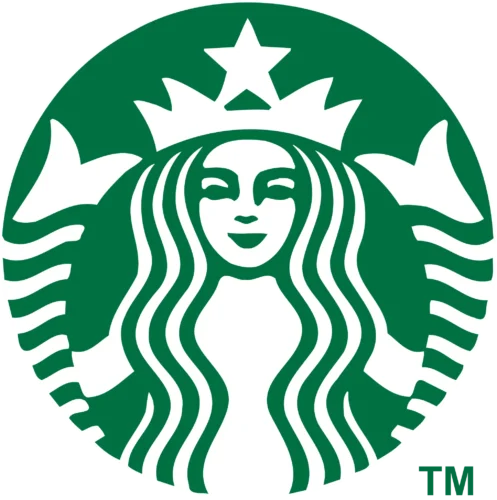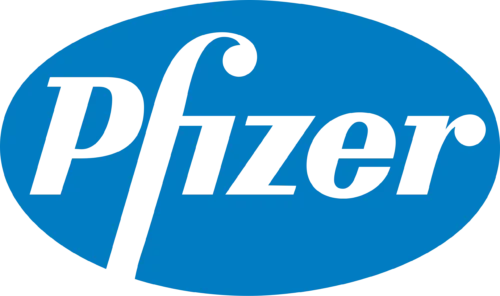We often look to sticker price when investing, but I’d argue that fundamentals matter more.
Nowadays, fundamentals matter more than sticker price, and several strong U.S. companies still trade under $200 a share.
Several long-term U.S. companies still trade under $200 per share, but offer a way to own reliable businesses without stretching their budgets.
In this article, we’ll look at nine of the best fundamental stocks under $200 for investors seeking quality and long-term confidence.
If you want affordable picks backed by real financial strength, this list is a great place to begin.
TL;DR: Top Fundamental Stocks Under 200 Dollars
- Coca-Cola Co (NYSE: KO) – Global beverage leader with steady dividends.
- Johnson & Johnson (NYSE: JNJ) – Diversified healthcare giant with reliable earnings.
- Exxon Mobil Corp (NYSE: XOM) – Energy major with strong cash flow and dividends.
- Walmart Inc (NYSE: WMT) – Retail powerhouse built for stability and scale.
- Starbucks Corp (NASDAQ: SBUX) – Premium coffee brand with worldwide growth potential.
- Cisco Systems Inc (NASDAQ: CSCO) – Networking leader with consistent fundamentals.
- Qualcomm Inc (NASDAQ: QCOM) – 5G chip innovator with recurring licensing income.
- Pfizer Inc (NYSE: PFE) – Pharma heavyweight offering income and stability.
- Walt Disney Co (NYSE: DIS) – Entertainment icon transforming through streaming growth.
What Are “Fundamental Stocks”?
By “fundamental stock”, we mean a company whose value is rooted in solid business operations rather than hype or speculation.
These are firms that generate earnings, manage debt responsibly, and have competitive advantages that give them staying power.
I’m not talking about flashy companies or ones that constantly make the news but players with consistency and a foundation we can count on.
The idea is that with strong fundamentals, a company is better positioned to reward shareholders long-term, even when the market is choppy.
9 Best Fundamental Stocks Under $200
Coca-Cola Co (NYSE: KO)
Overview
Coca-Cola is one of the most recognizable brands in the world, with products sold in nearly every country.
Its vast portfolio includes sparkling drinks, juices, teas, and bottled water, making it a key player in the global beverage market.
The company’s business model relies on strong branding, unmatched distribution, and partnerships with bottlers that help it scale efficiently while keeping operations asset-light.
Growth Catalysts
Growth continues to come from expansion in emerging markets, where beverage consumption per person remains relatively low.
New products and smaller package sizes appeal to consumers looking for healthier or more convenient options.
A careful pricing and product mix strategy has also helped the company grow revenues steadily, even in mature markets.
Beyond its beverages, the focus on digital marketing and localized campaigns helps strengthen connections with younger consumers and adjust to regional preferences.
Conclusion
Few companies match this brand’s consistency, scale, and resilience. It has proven its ability to generate steady earnings through decades of market shifts and changing tastes.
While potential risks such as health-conscious trends and currency headwinds remain, its adaptability and enduring consumer loyalty make it one of the most reliable long-term holdings for investors seeking stability and predictable performance.
Johnson & Johnson (NYSE: JNJ)
Overview
Johnson & Johnson is a global healthcare powerhouse, operating across pharmaceuticals, medical devices, and consumer health.

The diversified business model allows it to spread risk: when one segment faces headwinds, others often pick up the slack.
This resilience gives investors a company that has shown the ability to navigate shifting healthcare trends, regulatory changes, and demographic shifts.
Growth Catalysts
Several key drivers underpin Johnson & Johnson’s long-term potential. Its pharmaceutical pipeline includes treatments in high-growth areas such as oncology and immunology, which could generate meaningful new revenue streams.
The medical devices business stands to benefit from rising demand as global populations age and require more procedures.
Meanwhile, the consumer health side (though now a more focused part of the business) still brings in steady cash flows.
Beyond product innovation, the company’s global presence gives it access to growth in emerging markets where healthcare spending is rising.
Its strong balance sheet and history of reinvesting in R&D create a foundation for future innovation.
Conclusion
If you’re seeking a high-quality business that blends innovation with stability, Johnson & Johnson fits the bill.
It may not deliver blockbuster growth overnight, but its diversified healthcare model, global reach, and consistent track record make it a strong candidate for long-term investors.
Litigation risk, regulatory scrutiny, and generic competition remain possible headwinds, but the fundamentals suggest this is a company built to endure and perform.
Exxon Mobil Corp (NYSE: XOM)
Overview
Exxon Mobil is one of the largest integrated energy companies in the world. It spans exploration, production, refining, and chemical manufacturing.
That breadth allows it to capture value across the energy supply chain, from extracting crude oil and natural gas to refining and selling finished products.
Because of its size and integration, it often weathers commodity swings better than companies focused on only one segment.
Growth Catalysts
Growth prospects include new production projects in areas like the Permian Basin in the U.S. and offshore locations such as Guyana, which are expected to add meaningful volumes over time.
Additionally, the company is investing in lower-emission technologies, including carbon capture and hydrogen solutions, which may open new business lines in a changing energy market.
Its emphasis on disciplined capital spending and improving cost efficiencies supports long-term cash generation, which is key to sustaining returns in energy.
Conclusion
Exxon Mobil offers a value-oriented investment into the energy sector, underpinned by fundamental strengths such as global scale, integrated operations, and a strong cash-flow profile.
While energy markets will always experience volatility and regulatory risks, for investors comfortable with a cyclical industry, this company offers a blend of stability and value at a time when energy remains essential to the global economy.
Walmart Inc (NYSE: WMT)
Overview
Walmart is the world’s largest retailer by revenue and operates thousands of stores plus a major e-commerce presence across many countries.

Because it serves millions of customers weekly, it has deep consumer reach and stable cash flows, making it a prime contender for investors seeking a large, widely recognized company.
Growth Catalysts
Digital transformation is a major contributor to future growth. The company is integrating its in-store and online capabilities, expanding pickup and delivery services, and growing its marketplace business.
It also benefits from groceries as a stable foundation, since food and everyday essentials tend to be less sensitive to economic cycles.
As consumption patterns evolve, the retailer’s size, footprint, and investment in technology give it a competitive advantage.
Conclusion
If your aim is a business that combines scale, reach, and adaptability, Walmart stands out. It is not a rapid-growth stock, but rather a steady performer that adapts with the times.
Challenges include margin pressure, wage inflation, and competition from both online and discount players, but its fundamental strength and ability to pivot sufficiently make it a reliable choice for long-term investors.
Starbucks Corp (NASDAQ: SBUX)
Overview
Starbucks is the global coffeehouse chain known for its premium brand, recurring foot traffic, and ubiquitous store footprint.
Its business transcends just coffee: it is as much about experience, convenience and community.
With a presence in many countries and a mix of company-owned and licensed stores, it captures both local and global trends in consumer behavior.
Growth Catalysts
There are a few structural growth drivers. First, international markets, especially in Asia, still offer substantial room for expansion.
Secondly, store innovations (like drive-thru, mobile ordering, and digital loyalty programs) are enhancing convenience and customer retention.
Third, product innovation, new beverage formats, premium offerings and line extensions, keeps existing customers engaged while attracting new ones.
As consumer culture evolves, Starbucks leans into premiumization and convenience.
Conclusion
If you’re looking for a consumer brand with both global reach and recurring revenue, Starbucks fits nicely.
While discretionary spending is always subject to economic swings and costs can rise (wages, rents, raw materials), the brand and business model are strong.
For investors interested in consumer experience and lifestyle trends with a stable base, this company offers a compelling mix of growth and dependability.
Cisco Systems Inc (NASDAQ: CSCO)
Overview
Cisco Systems is a leading company in networking, infrastructure, and cybersecurity. It has built decades of experience serving enterprises, governments, and service providers around the world.
Its role in enabling digital infrastructure means it is deeply tied to how businesses run their networks, data centers, and security systems.
The shift toward software and services in its business model adds a layer of predictability that hardware-only companies lack.
Growth Catalysts
Digital transformation is a major tailwind for Cisco. Companies are investing in cloud, edge computing, and cybersecurity, areas where Cisco has a strong presence.
As data traffic grows, the need for reliable networks and secure infrastructure becomes greater. Cisco’s transition to more software and subscription-based services helps smooth out revenue.
With enterprises upgrading networks and embracing hybrid work, its relevance is high.
Conclusion
For someone looking for technology exposure without the wild swings of speculative tech, Cisco offers a balanced approach.
The company’s fundamentals, global reach, trusted reputation, and growing software mix, make it a practical choice.
Risks include slower corporate spending cycles and rapid innovation by competitors, but its role in the backbone of digital infrastructure gives it considerable staying power.
Qualcomm Inc (NASDAQ: QCOM)
Overview
Qualcomm is a technology company renowned for its mobile-chip designs and licensing model.
It earns revenue not only from chip sales but also from royalties on devices that use its technology.
That dual model gives it a structural advantage; its income is somewhat insulated from only hardware cycles.
The business spans mobile, Internet of Things (IoT), automotive, and connectivity, making its relevance broad.
Growth Catalysts
A key driver is the ongoing rollout of 5G and the future emergence of 6G and connected devices.
As more devices become smarter and more connected, from phones to cars to home systems, Qualcomm stands to benefit.
Another catalyst is its push into automotive electronics and IoT, which expands its addressable market beyond smartphones. Its strong patent portfolio and recurring licensing revenue provide a long-term tailwind.
Conclusion
If you’re hunting a technology-oriented stock with a solid foundation, Qualcomm stands out.
Short-term device cycles may introduce variability, but the long-term trends of connectivity, smart devices, and data demand are firmly in its favor.
For those willing to hold through fluctuations, this company offers meaningful upside tied to structural change.
Pfizer Inc (NYSE: PFE)
Overview
Pfizer is a global pharmaceutical company with a broad and diverse product portfolio spanning vaccines, rare disease treatments, oncology and more. Its history of delivering medicines at scale is well known.
Rather than relying on any one drug, Pfizer’s diversified operations provide a balance between established products and emerging growth.
This kind of structure gives it a steady base, making it a candidate for investors looking for stability in healthcare.
Growth Catalysts
Several long-term drivers stand out. One is its strong vaccine business, which benefits from ongoing global immunization efforts and public-health infrastructure worldwide.
Another is the pipeline of new therapies in fields like cancer and gene therapies, which offer upside over time.
Pfizer is also investing in R&D and manufacturing capacity in newer markets, positioning itself to benefit as emerging countries raise healthcare spending.
Its large global footprint means it can scale new products broadly.
Conclusion
For an investor focused on durability rather than rapid bursts of growth, Pfizer offers an appealing combination of scale, global reach, and innovation.
The risks are real, patent expirations, regulatory pressure and generic competition can weigh.
But the company’s fundamentals suggest it can navigate those challenges. If your goal is exposure to healthcare with reasonable growth and dependable operations, this company deserves consideration.
Walt Disney Co (NYSE: DIS)
Overview
Walt Disney is a diversified entertainment company that spans film studios, television networks, theme parks, cruises, and streaming services.
With iconic brands such as Disney, Marvel, Star Wars, and more, its content library and global reach are among the strongest in media.
That makes it not just a media company, but an experience and lifestyle business.
Growth Catalysts
Growth drivers include the streaming platform continuing to scale and shift toward profitability, expansion and monetisation of its parks and resorts globally as travel recovers, and leveraging its deep content catalog for licensing and consumer-product opportunities.
Its digital engagement and branded experiences continue to evolve, offering multiple revenue streams beyond traditional media.
Conclusion
If you want a business that combines brand strength, global consumer reach, and multi-platform appeal, Disney stands out.
While competition in streaming is fierce and capital intensity is high, its diversified entertainment model, legacy franchises, and capacity to adapt suggest a well-positioned company for long-term holding in portfolios focusing on growth and brand value.
Are Fundamental Stocks a Good Investment?
Stocks with strong fundamentals tend to have greater chances of success, making them a potentially sound investment decision.
When a stock is fundamentally sound, it tends to have a good dividend yield, low debt, high cash flow basis, and continued strong growth.
In turn, fundamentally strong companies tend to produce strong investment returns.
Many investors might opt to buy cheap stocks with strong fundamentals during an economic downturn.
This is because quality stocks have a higher chance of weathering the storm and, in turn, offer lower risk and higher growth opportunities.
When the stock market eventually rebounds, stock prices for fundamentally strong growth stocks could experience accelerated value appreciation. This then results in a handsome profit for shareholders.
Analyzing the health of a company’s fundamentals could be difficult and require a high degree of expertise.
However, some indicators that non-professionals can look into can help them make an educated decision.
Some of these indicators include the following:
- A company’s sales
- How much debt does a company have
- Their earnings growth performance
- Dividend history
- Price to earnings and how it compares with the industry
- Their competitors
- A company’s competitive advantage
Many investors choose to make their purchase decisions solely based on fundamental analysis. But employing technical analysis in conjunction with fundamental analysis could yield better results.
Technical analysis is used by traders, algorithms, and smart money to make buying and selling decisions.
When technicals and fundamentals are not aligned, it could be a strong indicator that either methodology is wrong.
For this reason, it’s critical to consider both fundamental and technical analysis before investing.
For example, if a company’s stock valuation remains unchanged, bullish technicals could lag.
Now that you know more about the best stocks to buy under $200 with strong fundamentals, you might consider adding one (or more) to your portfolio.
Risks of Investing in “Affordable” Stocks
Price Does Not Equal Value
A stock trading below $200 may give off a certain aura, but price alone says little about the company’s financial health or future prospects.
Some low-priced stocks are inexpensive because they’re fundamentally weak or facing challenges that have already been priced in by the market.
Volatility Can Be Higher
Affordable stocks can move more sharply in response to earnings results, news, or market sentiment.
This volatility can benefit active traders but create anxiety for long-term investors.
Smaller or lower-priced companies often attract speculative trading, which can cause short-term swings unrelated to actual business performance.
Fundamentals Still Rule
The key to separating quality from risk is understanding fundamentals. Focus on earnings growth, cash flow, and balance-sheet strength rather than short-term price moves.
Companies with solid fundamentals can recover from market dips, while weaker ones may struggle even when conditions improve. Fundamental strength, not share price, determines resilience.
Overconcentration Risk
It’s easy to load up on “cheap” stocks because they seem affordable, but holding too many positions in one sector or price bracket can create unnecessary risk.
Diversifying across industries, company sizes, and investment styles provides balance and smoother long-term returns.
Affordable stocks should complement, not dominate, a well-rounded portfolio.
Dividend Traps
Some affordable stocks offer high dividend yields that look attractive at first glance.
However, if a company’s payout exceeds its earnings power, that dividend may be unsustainable.
It’s important to check cash flow and payout ratios before investing for income. A reliable, lower yield is often better than an inflated one that might disappear.
FAQS
How Do You Find a Good Fundamental Stock?
A stock market screener is the best way to find a good fundamental stock. A good way to start is by filtering by P/E, Market Cap, Price/Free Cash Flow, etc. However, you will need to analyze the stock’s fundamentals to determine its worthiness.
Are Fundamental Stocks Safer Than High-Growth Stocks?
Generally yes, companies with strong earnings, manageable debt and established business models tend to be less volatile than speculative growth companies. But “safer” does not mean risk-free. You must remain aware of sector, management, and market risks.
What Is Technical vs Fundamental?
Technical and fundamental analysis are two different methodologies investors use to evaluate stocks. Fundamental analysis evaluates a company by measuring its intrinsic value. Technical analysis is a study of the price action of a company. When combined, they can be effective tools to help investors succeed in the markets.
How Often Should I Check a Company’s Fundamentals?
A good practice is to review put-and-forget companies at least once per quarter, especially after earnings releases. Check for changes in business model, new competitive threats, debt levels, or management changes that could alter the earlier appeal.
What Does It Mean to Have Good Fundamentals?
A company is considered to have good fundamentals when it meets certain criteria, including:
- Low debt dependency
- Plenty of free cash flow
- Strong leadership and ESG
- Global footprint
- Strong brand recognition
- Track record of growth
- Uninterrupted dividend increases, if they pay them
How do you evaluate fundamentals?
Evaluating the fundamental value of a company requires:
- An understanding of the company and industry in which you intend to invest
- Studying financial and earnings reports
- Analyzing ESG practices and ratings
- Check the company’s debt-to-income ratio and credit rating
- Analyzing future prospects and competitors
- Finding a competitive edge
Conclusion
Strong fundamentals never go out of style; they just get noticed again when markets become uncertain.
The nine fundamental stocks under $200 discussed above represent companies that have earned our trust and look like strong investment plays for a long time.
Each combines affordability with enduring fundamentals, giving us access to reliability without chasing high-priced shares.
Still, they should be part of a balanced portfolio, keep your allocation steady, review fundamentals regularly, and resist the urge to react to short-term swings.
The market will always shift between trends and hype, but solid businesses continue to grow quietly in the background.
Stay patient, stay diversified, and let quality, not noise, guide your investing decisions.










 Tags:
Tags:










